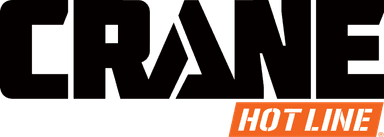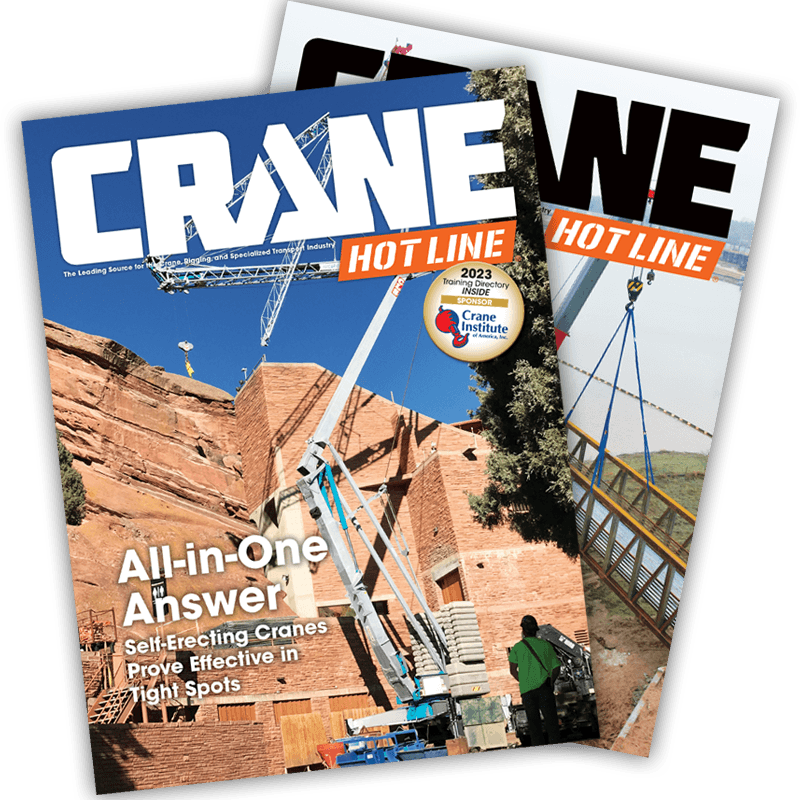Why Qualified Signalpersons Are Critical for Safe Crane Operation
During a lift, the signalperson ranks right up with the crane operator as the most important person on the crew.
I say that because whoever is giving the signals that guide moving and placing a load is essentially the operator’s eyes.
The clarity and accuracy of the directions the signalperson gives the operator play a huge part in making a lift safe and successful.
Before starting a training business, Crane Institute of America, I ran cranes for 16 years.
Those rigs ranged up to a Manitowoc 4100W with RINGER attachment and more than 300 feet of boom and jib.
Having spent considerable time in the seat, I can say that I really appreciated a signalperson who stood at the right location and gave clear and precise guidance to help me place a load.
That knowledge and skill was particularly vital for loads being set high up, at long reach, or in the blind.
Today, technology like boom-tip and load-block cameras can help an operator, but they can’t replace a trained and skilled signalperson.
Who Can Signal?
That’s why when I founded Crane Institute in 1987, I made sure to include signalperson training in the class offerings.
That was nearly two decades before OSHA, ASME and industry experts got together to formalize and standardize signalperson training and testing.
Because I knew first-hand the importance of properly trained signalpersons, I was among the industry experts who kept a close eye on the work of the C-DAC committee and volunteered insights as the committee helped created those standards.
Anyone can be a signalperson if they meet the OSHA-recognized requirements.
In fact, a signaler often also does some other job.
He or she may be a rigger, ironworker, boilermaker, pipefitter, carpenter, electrician, or other tradesperson, or even another crane operator or the lift director.
Because of that, Crane Institute offers signalperson training as part of its rigger training and its train-the-trainer course.
Regulatory Requirements
OSHA holds the employer responsible for choosing someone who is “qualified” to be a signalperson.
To be considered qualified, a signalperson must pass assessment by a competent evaluator.
That competent evaluator can be from an independent company, or from the signalperson’s employer. Regulation 29 CFR 1926.1401 defines who can be a competent evaluator.
The requirements a signalperson must meet to be considered “qualified” are a bit different than those a crane operator must meet in order to be “certified.”
Although a “qualified” person must be judged competent by a competent evaluator, he or she does not have to pass nationally accredited exams like those that crane operators must pass in order to be “certified.”
For example, a signalperson could be considered qualified if he or she can correctly answer oral or written questions about crane operation and safety asked by their company’s lift director, and can also demonstrate that they know the required hand or verbal signals that will be used to communicate with the crane operator.
Even though the qualification process can be done orally, the employer must document it and keep a record on site.
Knowledge and Communication Skills
What must a signalperson know for OSHA to consider him or her qualified?
Most obviously, they must know how to communicate clearly and accurately with the crane operator.
Those requirements are listed in OSHA/ASME regulations 29 CFR 1926.1419 through 1926.1422 and in ANSI standard B30.5-2018.
Those regulations require a signalperson to know the 20, or so, standard hand signals commonly used in crane operation, plus any special hand signals for a specific lift.
If special signals are needed, the signalperson and the crane operator must agree on them before the lift starts.
The regulations also require the signalperson to know how to use any needed voice signals and audio equipment, for example a mobile radio, used to communicate with the crane operator.
Again, the signalperson and the crane operator must agree on those signals before the lift starts.
Any message to the crane operator, whether visual or verbal, must be given from the crane operator’s perspective.
For example, “swing right” must mean swing toward the crane operator’s right.
Also, verbal messages must contain these elements in this order:
- Function
- Direction
- Distance or Speed
- Function Stop
One example: “Swing right 50 feet ... 25 feet ... 15 feet ... 10 feet ... 5 feet ... 2 feet ... swing stop.”
Clear communication between signaler and operator is vital, especially in cases like taxi crane work, where the signaler and operator may not have worked together, or even met each other, before.
Understanding Crane Ops and Site Hazards
As part of being considered qualified, a signalperson must understand the basics of crane operation and limitations, such as the dynamics of swinging and stopping loads, the effects of boom deflection, and that lifting capacity decreases as boom length and load radius increase.
For example, a signaler should know that if he or she tells the crane operator to lower the boom, it will increase the load’s radius, thereby reducing the crane’s capacity.
As another example, some cranes have more lifting capacity over their front than over their sides, so a signalperson must know not to tell the operator to swing a load into an area that does not have enough capacity.
Knowing that helps avoid demanding more than the crane can safely handle. It’s especially important on jobs without a lift director on site.
Also, a signalperson must be able to identify and avoid site hazards like power lines, obstacles, and weather dangers like strong winds or potential for lightning.
The signalperson must also be able to analyze the crane’s swing, booming, and travel paths to make sure the load will not travel above people and that nobody will be struck by any moving part of the crane.
There are many ways to teach a signalperson the knowledge and skills they need to be safe and successful.
You can send them to a formal training organization like Crane Institute.
You can choose to have a knowledgeable person from your organization, for example a certified lift director, teach them.
You can even assign an experienced and proven signalperson from your organization to mentor them.
Whichever method you choose, a combination of classroom and hands-on experience is the most effective way to develop a qualified signalperson who will help crane operators make the lifts you need safely and effectively.
-
James Headley is founder and CEO of Crane Institute of America (CIA) and Crane Institute Certification (CIC). For more information about Headley, training courses, or his book Rigging, visit www.craneinstitute.com.



